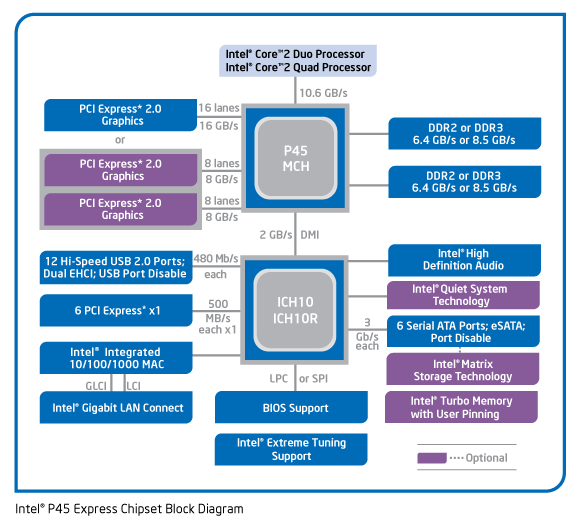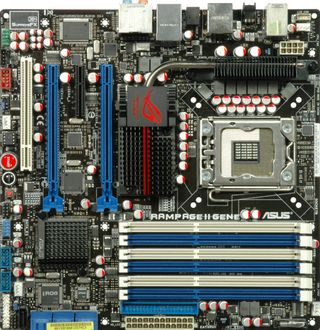Southbridge Battle: 780a, ICH10 and SB750, Compared
Intel: ICH10R Southbridge On The X58 Express Chipset

The ICH10 chipset is probably the most popular southbridge, as it is part of all current Intel chipsets and hence can be found on a plethora of motherboards and Intel-powered computers. The ICH10R is the most fully-featured version available, which also supports RAID 5.
Intel was one of the first to support SATA/300 with NCQ through an AHCI controller back on its ICH8 southbridge. However, only the RAID and Digital Office (DO) models actually support AHCI and RAID 5—the more mainstream models do not. In this context, it is hard to understand why Intel decided to pair its modern G41 business-class chipset with the outdated ICH7 southbridge, because this old part does not support AHCI at all.
Intel’s RAID management software is called Matrix Storage Manager, and it supports several different RAID types, including the matrix mode. This lets you deploy multiple RAID arrays across the same set of hard drives. For a simple example, you could use two hard drives and utilize 50% of each drive’s capacity to create a RAID 0 stripe set. This would be the perfect place to install your operating system, as it provides best performance. The remaining 50% of each drive could be used to install a RAID 1, so data in that volume would be mirrored on both drives. If a drive fails, you would lose the operating system array and partition, but your data would still be available on the remaining RAID 1 volume.
Asus Rampage II Gene: X58 with ICH10R

Asus’s MicroATX Rampage II Gene motherboard is a very compact enthusiast solution for Core i7 processors based on the X58/ICH10R chipset combo. Asus crammed a slew of features on this unit, including an additional storage controller by JMicron, the JMB363. Through it, ASUS delivers an UltraATA/133 port for two devices, one internal SATA/300 port, and an eSATA port, which can be accessed through the motherboard’s I/O shield.
The shield also offers six USB 2.0 ports, audio jacks, Gigabit Ethernet networking, FireWire 1394a, and a CMOS clear switch. The latter is helpful for recovering from unsuccessful overclocking attempts that render the system unbootable. Enthusiast features abound, including SupremeFX audio and powerful voltage regulator circuits for the CPU and other key components facilitate extreme overclocking.


Stay on the Cutting Edge
Join the experts who read Tom's Hardware for the inside track on enthusiast PC tech news — and have for over 25 years. We'll send breaking news and in-depth reviews of CPUs, GPUs, AI, maker hardware and more straight to your inbox.
Current page: Intel: ICH10R Southbridge On The X58 Express Chipset
Prev Page AMD RAID Creation Next Page Intel RAID CreationMost Popular

